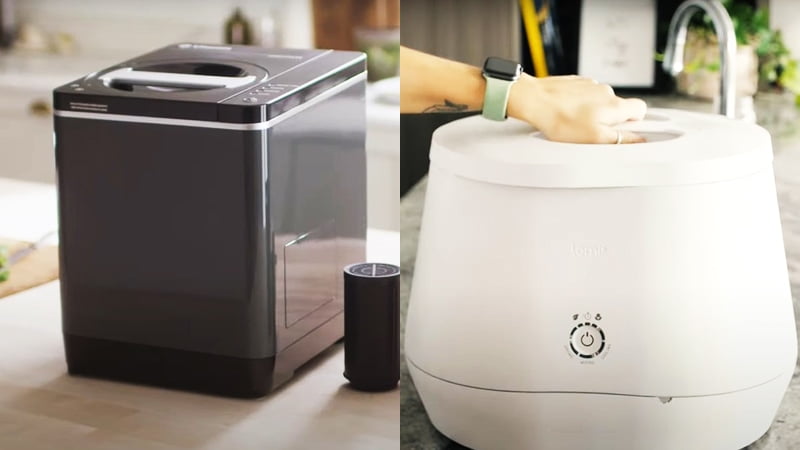The similarities and differences between the Vitamix FoodCycler vs Lomi are attracting more and more newcomers recently. The reason for that is the inconvenience of outdoor composting. Not everyone has a huge backyard for composting. Or it also can be that you live in colder climates which halts the composting process.
The reasons for indoor composting are plenty. And with inventions like Vitamix FoodCycler and Lomi, it’s an affordable and realistic investment to responsibly re-use food wastage for plants.
But which is better?
The differences between these two brands depend on time, quality, and versatility. The Vitamix FoodCycler is faster than the Lomi. And the Lomi offers more options in recycling food and plastics than the Vitamix.
Vitamix FoodCycler vs Lomi: Comparision Chart

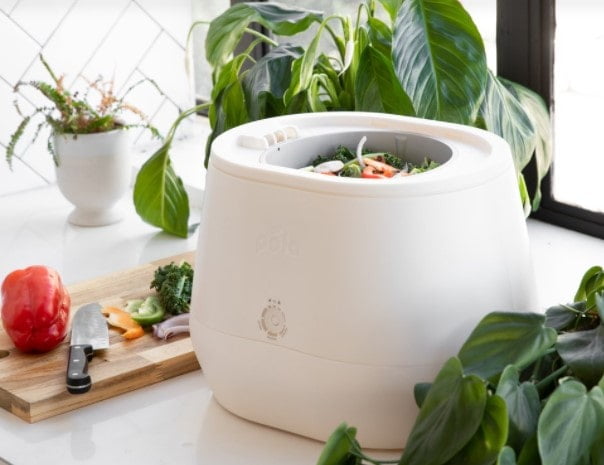


Last update on 2024-11-16 / Affiliate links / Images from Amazon Product Advertising API
Vitamix FoodCycler vs Lomi: Differences
It’s a tie (1 – 1) between the Vitamix FoodCycler vs Lomi as they both have pros and cons that provide you a healthy, affordable, and convenient way of creating nutrient-rich fertilizer and compost for your home plants.
1. Compost Technology
The Winner: Lomi
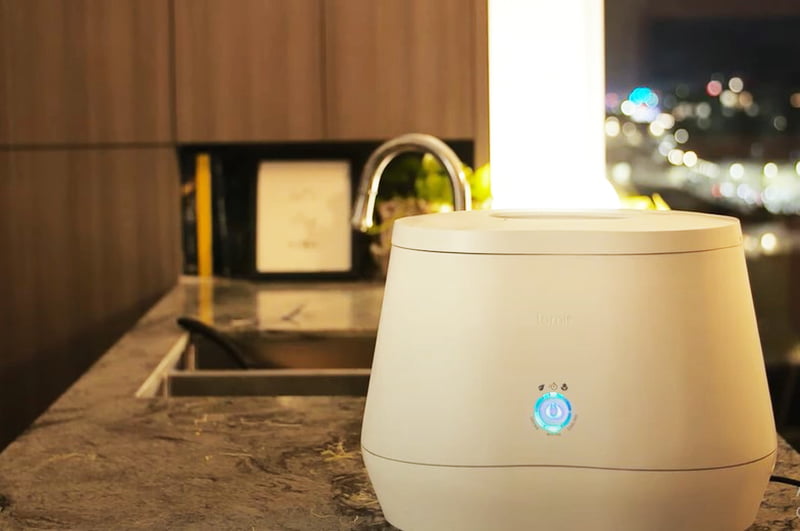
Lomi here takes the prize for being the most versatile appliance for indoor composting. As a recycler, it not only turns food scraps into compost, but it also offers the chance to turn plastics like plastic cutlery, packaging, and used coffee cups into compost.
Unfortunately, the Vitamix FoodCycler does not offer such flexibility.
Both the Lomi and Vitamix FoodCycler are compatible with fruit and vegetable scraps, fish bones, dairy products, egg shells, coffee grounds, tea, pet food, and any such leftovers.
You cannot add all plastics to the Lomi. Only Lomi-approved bioplastics include compostable plastics.
So in comparison to Vitamix FoodCycler, the Lomi is more diverse. But if your plan is to concentrate more on creating nutrient-dense fertilizer from food wastage, then Vitamix FoodCycler is your pick.
Another difference is that the Vitamix FoodCycler does not make compost but a dehydrated fertilizer that you can mix with plant soil for it to have a positive effect.
The Lomi, on the other hand, creates compost from food waste and bio-plastics. This means it creates its own, organic soil for plant growth.
2. Controls / Settings
The Winner: Vitamix FoodCycler
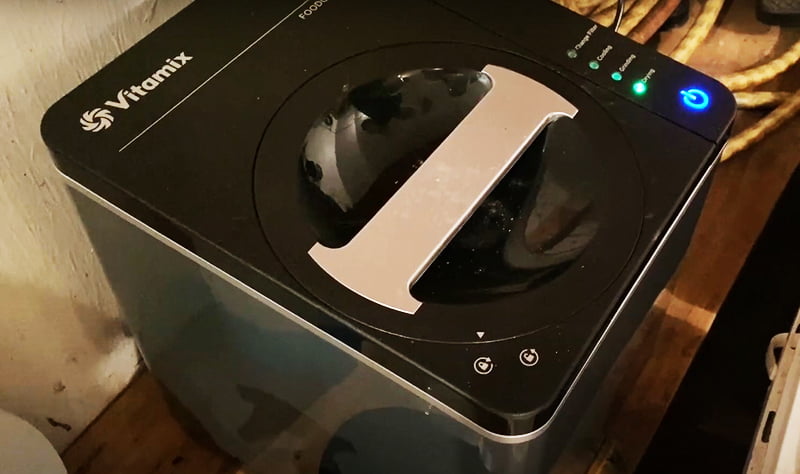
+Processing Time
The Vitamix FoodCycler comes closest to being a user-friendly and convenient indoor kitchen tool for composting waste. It does not create soil, but it creates nutrient-rich fertilizer that you can add to the plant soil. And it does this in 3 to 8 hours.
In comparison, Lomi composters take at least a day to create compost that can be used as the soil in plants. So you will have to waste for an entire day before you can use the compost in your garden. Using the Lomi is definitely more time-consuming.
With a machine like Vitamix FoodCycler, you can easily and seamlessly use it on a day-to-day basis and at the end of every meal. Just fill up the Vitamix with food scraps and run the cycle. After a few hours, you can empty the fertilizer and start all over again by the end of the day.
With Lomi, you will have to store away the foods you want to compost for a day before you can add it to Lomi after the first cycle. So the compost will be ready the next day. And you can keep repeating the process on a day-to-day basis.
Families that go through a lot of waste in a day demand a faster processing time which is why the Vitamix FoodCycler is their preferred option.
Vitamix FoodCycler vs Lomi: Similarities
If you want to know who should get either the Vitamix FoodCycler or Lomi, these are the reasons why both are great brands for home composting…
1. Indoor Friendly
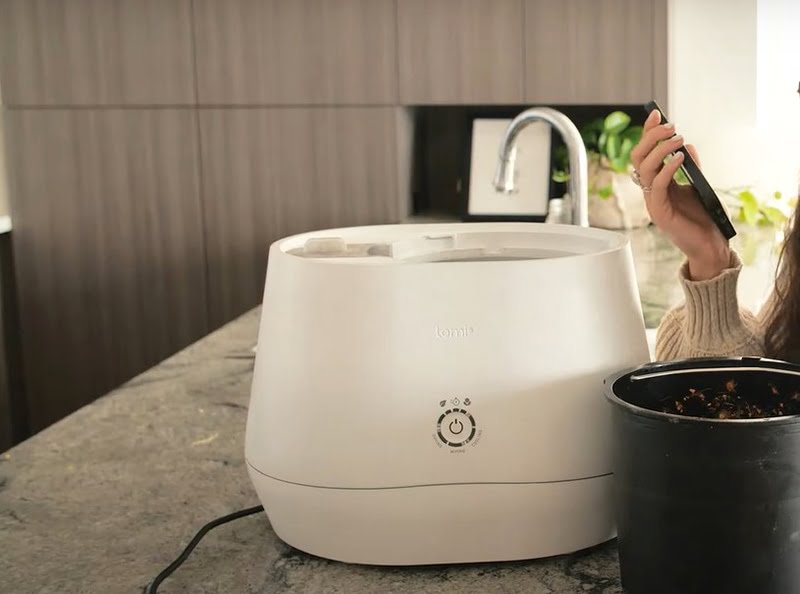
People living in studio apartments or houses without outdoor space are often the ones who give up on composting altogether. But brands like Vitamix and Lomi make that limitation a realistic and affordable option for plenty.
You can keep a Vitamix FoodCycler or a Lomi model inside your house, under your kitchen sink, where generally garbage bins are usually kept, or in the shed.
Being indoor-friendly, they are also unbelievably quiet and odorless. The carbon filters they use make sure that the harmful methane gas gets wiped off and no foul stink lingers around the machine while it’s on.
This odor neutralization technology exists in both the Vitamix FoodCycler and Lomi’s technologies.
2. Environmentally-Sustainable
Both brands focus on reducing food wastage exponentially in homes. This means turning everything you throw away in the kitchen bin – coffee grounds, tea leaves, vegetable and fruit scraps, meat bones, fish bones, pet food, etc. – goes into the food recycler.
Where all this winds up in a landfill, you can turn it into plant food for composting. So that’s eco-friendly and efficient, and the ideal alternative to traditional composting methods that require more effort and space!
3. Carbon Filters
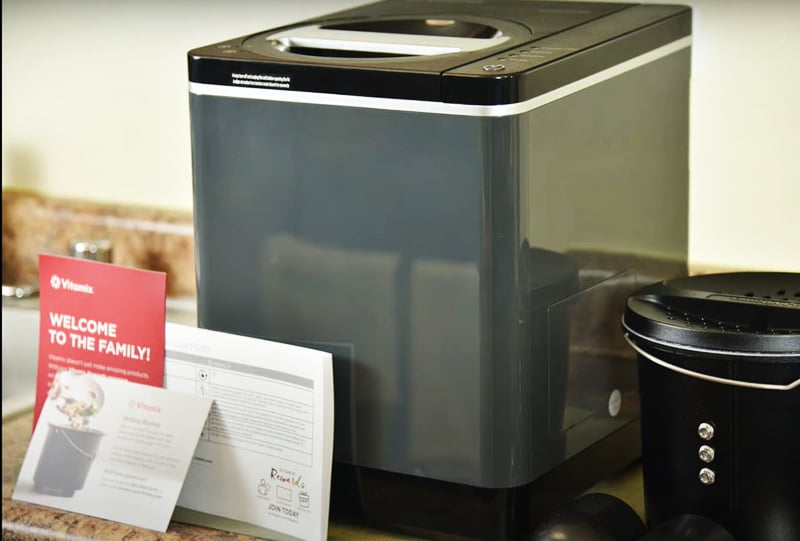
Both machines use carbon filters with a lid. The smooth and consistent performance indicates high-quality and durable materials.
The Vitamix FoodCycler comes with carbon filter inserts that need replacing every few months. While the Lomi features carbon filters and lids that have a reusable characteristic. So they last a bit longer but not in a significantly impactful way. Carbon filters are a fantastic choice as they improve the eco-friendly nature of the composters while also eliminating odor and methane gas from the compost.
Lomi’s carbon filters need to be replaced once every 3 to 6 months. While the carbon filters in a Vitamix FoodCycler every 2 to 4 months. This also depends on use and frequency but I don’t see any noteworthy distinction between both brands.
4. Dishwasher-Safe Parts
Apart from the modern and sleek design that both the Vitamix FoodCycler and Lomi have in common, they also feature dishwasher-friendly parts. So you don’t have to wash anything – especially the bin- by hand.
Just place the bin upside down and run a few cycles. It’ll come out looking brand new and smelling of fresh detergent, with no odor or a speck of dirt at all.
5. Large Capacity
Both the Vitamix FoodCycler and Lomi feature 2 to 3 liters capacity. That means you can convert around 2-3 liters of food waste into fertilized compost for plants. Also eliminating the inconvenience of dealing with leaky and stinky garbage bins.
The bucket, despite its large capacity, is compact and lightweight. The bucket also includes a lid that acts as a bin so the foul odor of food scraps does not come out while you fill the compost bin for another composting cycle.
Quick Rundown of Vitamix FoodCycler
- The FoodCycler FC-50 is a compact food recycler that reduces food waste and eliminates food scrap odors, making it ideal for indoor use. The new carbon filter lid reduces odors, so you can store your scraps until the bucket is full without worrying about offensive smells. And quieter cycles mean you can run it multiple times a day, year round.
- Convenient: Our compact food recycler reduces food waste to a fraction of its original volume. Mix the recycled food compound into your soil for an easy, nutrient-rich plant food.
- Compact: The FoodCycler FC-50 fits almost anywhere—you just need one cubic foot of space and a power outlet. Keep the removable waste bucket in the kitchen, under the sink, or by the trash can, and store the FoodCycler in the garage, in a closet, or on the counter.
- Easy To Use: Run multiple cycles per day, year round, with just the press of a button. After each cycle, simply put the removable waste bucket in the dishwasher for easy cleaning.
- Odorless & Quiet: The carbon filter lid and quieter cycles make the FoodCycler FC-50 ideal for indoor use. Reduce your food waste year round.
Last update on 2024-11-16 / Affiliate links / Images from Amazon Product Advertising API
Quick Rundown of Lomi
Product Videos
References
- Vitamix FoodCycler from Vitamix https://www.vitamix.com/us/en_us/shop/foodcycler-fc-50
- Lomi https://pela.earth/lomi

I am sure you love food. Otherwise, you won’t be here. As a full-time and a part-time chef at a local restaurant, I know my way around food. Ever since I was a young girl, I enjoyed helping my mom in the kitchen.
We would often experiment with the spices, ingredients, and flavors and create great meals for my brothers and dad. Since cocking was my first passion, I decided to go in that direction. I finished culinary school, got my first job, and started developing my skills.
Later when kids came, I had all the liberty in the kitchen to combine some of the unique flavors. A lot of them were a success, but now and there I would make a couple of mistakes.
